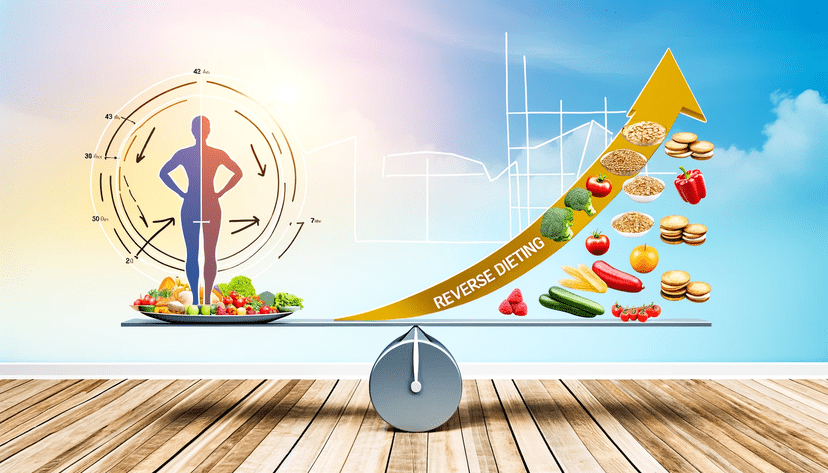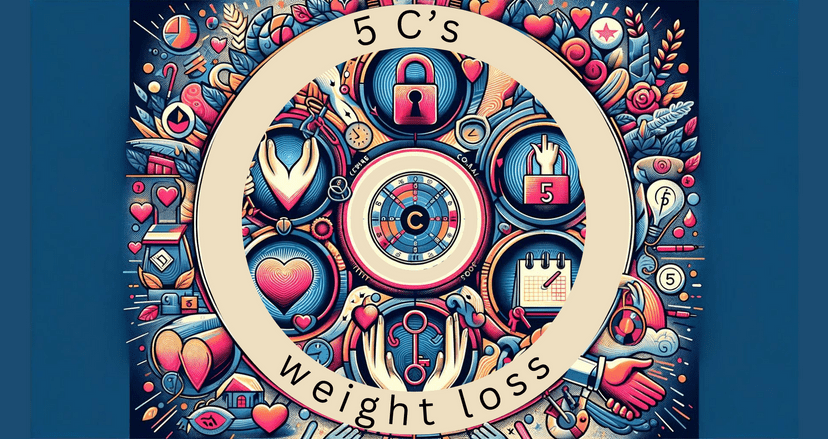Does Losing 10 Pounds Mean Dropping a Dress Size?

Understanding Weight Loss and Dress Sizes
When it comes to weight loss, many of us set specific goals. A straightforward and common one is something like: "I'd like to lose 10 pounds." But, what does this mean in terms of dress sizes? Will you drop a size? Two? More? The truth is that there is no fixed answer to these questions. Weight loss and its impact on clothing sizes is not a one-size-fits-all concept but rather depends on a handful of factors. Discussing this, we'll delve into the relationship between weight loss and clothing sizes, factors influencing dress size changes, and the doubts surrounding the so-called 10-Pound Rule.
The Relationship Between Weight Loss and Clothing Sizes
In general terms, weight loss often leads to a reduction in clothing size. However, the ratio of pounds lost to dress size reduction is not consistent and varies widely from person to person. To comprehend this, it's important to understand that body weight does not directly correlate with size; body composition and shape also play significant roles. For example, a woman weighing 150 pounds with a high concentration of muscle mass can wear a significantly different size than a woman of the same weight who has a higher percentage of body fat.
Body composition refers to the proportion of fat, muscle, bone, and water in your body. Weight loss can lead to changes in body composition. When losing weight, the balance shifts between these components, and not always in equal measures, altering your overall shape and size even while your weight remains the same.
Factors Influencing Dress Size Changes
The distribution of weight loss also significantly influences dress size changes. While we'd prefer to dictate where we lose fat, our bodies largely control this. You must understand, that factors such as genetics, hormones, and lifestyle can dictate where you lose weight first. For some, weight seems to drop from the top down. For others, weight comes off more from the lower body. This uneven weight loss means that the number of pounds you need to lose to drop a dress size varies significantly and can't be generalized universally.
Moreover, clothing manufacturers don’t adhere to a standard sizing system. A size 6 in one brand could be a size 4 or 8 in another so it isn't uncommon to have different dress sizes in your closet. This is called vanity sizing and further complicates the correlation between weight loss and clothes size.
Myths vs. Reality: The 10-Pound Rule
You may have heard the rule of thumb that losing 10 pounds equals dropping a dress size. This rule might hold true for some but remains a gross oversimplification for many. The '10-Pound Rule' largely ignores individual variability in body shape and composition. It's important that weight loss should be seen as a personal journey, with results that will vary widely depending on your individual body shape, composition, and where you tend to lose weight first.
In conclusion, the association between weight loss and the reduction in dress sizes is complex and influenced by several factors, including body composition and distribution of weight loss. Instead of anchoring your weight loss success on a generalized '10-Pound Rule', focus more on healthy lifestyle changes and practices that promote a healthier body - both inside and out. Your clothing size can be a reference point, but don't let it define your progress or self-worth. Engage in regular physical activity, maintain a balanced diet, and above all, celebrate every accomplishment along your journey to health and well-being.
Personal Variability in Weight Loss and Dress Sizes
The journey to weight loss is an incredibly personal one. Every individual's body is unique, and losing weight tends to have diverse effects for various people. This differentiation can be linked primarily to the individual's body shape, body size, and the specific locations from where weight loss occurs. These factors can influence the change in dress sizes, making it a relatively inconsistent measure of weight loss.
Understanding Your Body Type
Broadly speaking, there are three general body types — ectomorph, mesomorph, and endomorph. The ectomorph body type tends to be lean and long, with difficulty building muscle. The mesomorph body type is more muscular and can gain or lose weight comparatively easily. Lastly, the endomorph body type usually presents with higher body fat and tend to gain weight more easily.
However, these classifications are just guidelines, and not all bodies fit neatly into these categories. Each person is a unique mix of the three types. Recognising and understanding your specific body type can be an influential factor in determining how your body might respond to both diet and exercise.
How Different Bodies Respond to Weight Loss
The way individuals lose weight is directly influenced by their body type and their genetic makeup. While an ectomorph might notice a difference in dress sizes with noticeable weight loss, a mesomorph or endomorph might not experience a similar decrease in clothing size after losing the same amount of weight.
This anomaly can be explained by the differences in where these body types store fat. For instance, if you tend to store fat in your hips and thighs (a characteristic of the pear-shaped body), you might notice a significant change in your pants size with weight loss. Conversely, if you gain weight primarily in your midsection (an apple-shaped body), you may not see as dramatic a shift in clothing sizes when you lose weight.
Also, it's essential to understand the role muscle mass plays in weight loss. Muscle mass is denser than fat, which means it takes up less volume than an equal weight of fat. This is why strength training can make you look more toned and slim, even if your weight stays the same.
Setting Realistic Expectations for Size Changes
A common misconception is that losing a fixed amount of weight, such as 10 pounds, will result in dropping a dress size. While this might hold true for some, it's not a universal experience.
Remember, the scale doesn't tell the whole story. Body composition (the relative amounts of muscle, fat, water, and other tissues in your body) and where you lose fat play a significant role in size changes.
Instead of getting fixated on decreasing clothing sizes, it's more beneficial to focus on attaining a healthier lifestyle through balanced nutrition, regular physical activity, and positive body image.
Additionally, it's vital to have realistic expectations regarding weight loss and changes in body size as unrealistic goals can lead to frustration, harmful dieting practices, and a negative relationship with food and body image. Remember that your worth is not determined by the number on the scale or the tag in your clothes. Your journey to health and fitness is unique to you, and any progress, no matter how small, is a step in the right direction.
Healthy Approaches to Achieving Your Dress Size Goals
The pursuit of weight loss is often linked to the imagery of smaller dress sizes and the sinking number on the scale. However, the simple equation of losing 10 pounds to dropping a dress size is, unfortunately, not accurate for everyone due to individual body shapes, fat distribution and other factors. A healthier, more sustainable approach involves setting health and fitness goals that aren’t exclusively tied to these numbers. In this section, we will examine how you can achieve your dress size goals through a focus on a balanced diet, physical fitness, and a positive mindset.
Nutrition and Exercise for Sustainable Weight Loss
Keep the spotlight on sustainable lifestyle changes when approaching weight loss. Consuming a nutrient-rich, balanced diet and incorporating physical activity in your daily routine are the stepping stones to long-term health and fitness.
When it comes to nutrition, aim for a diet filled with a variety of fruits, vegetables, whole grains, and lean proteins. These foods not only provide the nutrients your body needs to function optimally, but also help you feel more satiated, making it easier to maintain a calorie deficit without feeling deprived.
As for exercise, regular physical activity is key. This does not necessarily mean endless hours on the treadmill or lifting heavy weights. Try to find a form of exercise that you actually enjoy and thus, are more likely to sustain in the long run. This can be anything from brisk walking, swimming, yoga to dancing.
The Importance of a Positive Mindset
Understandably, the desire to attain a specific dress size can be genuinely motivating. But too much focus on the scale can sometimes become a source of stress and derailment. Now, this is where maintaining a positive mindset comes into play. Instead of considering weight loss as a punishing regimen, see it as a journey towards a healthier, more vibrant you. Nourish your body, not just physically with good nutrition and exercise, but emotionally and mentally through self-care and self-love.
Maintaining Focus on Health Over Numbers
In your quest to drop a dress size, never forget the most important goal: your overall health. The numbers on the scale or the tag of your dress should never be the lone indicators of your health and fitness journey. Health is multi-faceted, encompassing not just your weight, but also aspects like how well you sleep, your energy levels, how strong and capable you feel, and even your hair, skin, and nails.
Therefore, always prioritize your health over the numbers. Even if the scale doesn’t move as quickly or as much as you’d like, or if you’re not shrinking as rapidly into smaller sizes, keep in mind that every step you make towards a healthier lifestyle is a victory.
As you move forward on your fitness journey, remember to keep these three pillars – nutrition and exercise, a positive mindset, and focus on overall health – at the heart of your actions. Embrace the journey and you may discover that the dress size you were seeking will come not as a harsh objective, but as a natural result of embracing a healthier, happier lifestyle.
In Summary
The journey to weight loss and dropping dress sizes tends to be complex and unique for everyone, influenced by an individual's body type, body composition, and weight distribution. The common guideline that suggests losing 10 pounds generally equals to going down a dress size doesn't hold true for everyone and oversimplifies the process of weight loss. It is crucial that our understanding of weight loss goes beyond the numbers on a scale and embraces the concept of healthier lifestyles.
Achieving your dress size goals must be viewed as a personal journey, influenced by sustainable lifestyle changes, which include a balanced diet, regular physical activity and a positive mindset. Key factors such as body composition and genetic makeup should play a significant role in setting realistic and attainable goals for weight loss. When embarking on this journey, remember not to over-emphasize the numbers but rather focus on improving your overall health and well-being.
Plan of Action
In light of the above discussion, the pathway to achieving your health and fitness goals, including dress size reduction, incorporates three main pillars.
-
Nutrition and Exercise: Consuming a balanced diet and engaging in physical activity comprise the baseline of any sustainable weight-loss and health strategy. This means making long-term changes that can include incorporating more fruits, vegetables, whole grains, and lean proteins in your diet, and engaging in regular physical activity that you enjoy.
-
Positive Mindset: It is also imperative to keep a positive attitude towards your body image and dieting concept. Weight loss is an individual experience which should be seen as a journey to overall wellness and not a punishing regimen.
-
Health Over Numbers: Above all, concentrate on the holistic aspects of health and not just on the numbers on the scale or the size of your clothes. This means valuing good sleep, increased energy levels, strength, improved skin, hair and nails and overall wellbeing, above numerical metrics.
Action Steps
To implement the healthier approach towards achieving your dress size goals, here are some action steps:
-
Conduct some self-reflection and identify your body type. Understanding how your body stores fat and how it may respond to dieting and exercise is your first step.
-
Develop a meal plan that emphasizes the consumption of fruits, vegetables, whole grains, and lean proteins and aim to stick to this as closely as possible.
-
Identify a form of physical activity that you enjoy and include this in your routine. Combact the idea that exercise is a chore, instead, view it as something you enjoy doing.
-
Establish a regular sleep routine to ensure that you're well-rested and help your body to recover from your daily activities and exercise.
-
Finally, regularly celebrate your progress, no matter how small, and remember that change takes time. Continuously remind yourself that this journey is about improving your overall health and not just about shrinking into smaller sizes.
By following these steps, you will be putting into practice the concepts discussed in this blog post. The journey may be challenging, but the end result will be a healthier, happier you.













